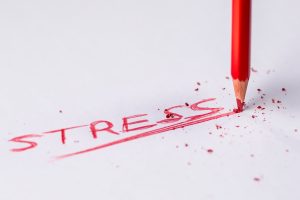Understanding Key Terms & Concepts in a TOK Journal Assignment
When writing a TOK journal assignment, there are several key terms and concepts that it is important to understand. In this section of the guide, we will cover three essential concepts in greater detail: Theory of Knowledge, Epistemology, and Ontology.
Theory of Knowledge
Theory of Knowledge is an area of study that examines the nature of knowledge and how it is acquired and used. It seeks to explore questions such as: What can be known? How do we know if something is true? What is the difference between fact and opinion? Answering these questions helps us to form our own opinions about the world, which can then inform our decisions.
Epistemology
Epistemology is the branch of philosophy that deals with knowledge. Specifically, epistemology is concerned with the nature of knowledge and how it is acquired and used. It is the study of what makes certain beliefs or statements true and how those beliefs can be justified.
Ontology
Ontology is the branch of philosophy that focuses on the nature of being. It deals with questions such as: What is a thing? What properties does it have? How do different things relate to each other? Ontology is concerned not only with the nature of existence, but also with the nature of relationships between different entities.
Now that we have a better understanding of the key terms and concepts related to TOK journal assignments, let’s move on to the next section of the guide, which covers getting started.
Getting Started: Brainstorm Ideas
Writing a Theory of Knowledge (TOK) journal assignment can be an exciting experience. The best way to get started is to brainstorm what ideas you have for your assignment. There are many different ways you can go about doing this – it’s all about finding the approach that works best for you.
One popular method is to create a mind map. This exercise consists of drawing out different concepts related to the topic and connecting them together. By visually representing the ideas, you can easily identify which topics can be explored further in your assignment. It also helps to make note of any questions or uncertainties you may have as you go along.
Another useful technique is free-writing. This involves writing down whatever comes to your mind, without any editing or judgement. It can help you identify potential ideas and organize your thoughts in a more concrete way. Just try to let your ideas flow freely and don’t worry about making mistakes – it’s a great way to begin honing in on the focus of your assignment.
Finally, it is important to consult relevant sources such as books, journals, magazines and online resources. Doing this will give you a clearer idea of what you might include in your assignment. It is best to collect a wide variety of sources so that you are not reliant on just one type of information.
Overall, taking time to brainstorm ideas for your TOK journal assignment is important, as it allows you to properly plan out your approach and get a better understanding of the topics at hand.
Step-by-Step: Structuring the TOK Journal Assignment
It can be intimidating to start a complex journal assignment. The good news is that having a clear and organized plan of attack can help you succeed. Break down the process of structuring your TOK Journal Assignment into several manageable steps and you’ll be on your way to crafting a great piece of work.
The first step is to consider the requirements of the assignment. Make sure you understand exactly what is expected of you and don’t forget to check any relevant grading criteria. Once you have a good grasp of the task at hand, it’s time to start planning.
Start by analyzing the sources of information that you will use in your journal assignment. Collect as many different sources as possible, but be careful to ensure that they are appropriate and relevant to the topic.
Once you have collected the necessary sources, break down the assignment into smaller parts. Outline the main sections of your journal assignment and the arguments you plan to make. This is a great way to keep the ideas in your head organized and will make writing much easier later on.
Next you should create a timeline for completing the assignment. Estimate how long each section will take you to complete and allocate a set amount of time for each part. This will make it easier to keep track of your progress as you work.
Finally, get started! Write the first draft of your journal assignment and then revise, edit, and make changes as needed. Be sure to proofread your work and double check that you have included all the necessary elements. Following these steps will help you structure a well-thought-out, comprehensive TOK Journal Assignment.
You Might Also Like:
Analyzing Sources and Forms of Evidence
One of the most important parts of completing a TOK Journal Assignment is analyzing sources and forms of evidence. In order to make an effective argument and support your claims, it is essential that students gather quality evidence from reliable sources. To do this, students must be able to accurately gauge the relevance and strength of evidence to their argument.
When examining evidence, it is important to remember to be critical. Ask yourself questions such as “How does this evidence support my argument?”, “Does it fit with the overall theme of my paper?” and “What is the source of this evidence?” Other questions might include “Are there any biases in this source?” and “How credible is this source?”. By asking these questions, you can ensure that the evidence gathered is appropriate and supportive of your argument.
Forms of evidence range from primary sources (such as documents, emails, or recordings) to secondary sources (such as news articles, books, or websites). It is important to be aware of the difference between these two sources. Primary sources are often more reliable as they are directly related to the topic at hand. However, secondary sources can also be useful, provided that they are from reliable sources and are up-to-date.
As you analyze different sources of evidence, remember to take notes for yourself. This will help you when it comes to referencing your sources later on and can also help remind you of why the evidence was relevant to your argument. Finally, don’t be afraid to reject evidence which does not serve your purpose. Being selective with your sources will help to strengthen your overall argument.
Writing and editing can be a daunting task. It is important to take your time and go through the process of writing and editing to ensure you are producing an effective piece of writing. Here are some tips on creating an effective piece of writing:
Planning
It is important to plan ahead when writing your TOK Journal Assignment. Outline all the points that you want to make, and break your work down into smaller chunks. Creating an outline will help you stay organized, and will allow you to focus on each part of your journal one at a time.
Drafting
Once you have created an outline, it is time to start drafting. When drafting, keep the following tips in mind:
- Be concise – make sure every sentence counts.
- Use active voice.
- Do not repeat the same point multiple times.
- Stay focused on the main topic – avoid digressions.
Editing
Once you have finished your first draft, it is time to start editing. Editing is a very important part of the writing process, as it allows you to improve any errors or mistakes you may have made in your first draft. There are many types of editing, such as grammar and spelling checking, content checking, and formatting.
Revising
The last step in creating an effective piece of writing is to revise your work. Revising allows you to make any changes or additions needed to improve the overall quality of your journal. Take your time and read over your work multiple times. Pay close attention to any mistakes or areas that need improvement, and make sure to address them before submitting your assignment.
By taking the time to plan, draft, edit, and revise your TOK Journal Assignment, you will be able to create an effective piece of writing. Following these simple steps will help you produce a well-written, organized journal that meets the expectations of the assignment.
Tips for Referencing
When writing a TOK journal assignment, it is important to make sure that you appropriately credit any sources that you used. This gives credibility to your work and also allows readers to confirm the accuracy of your statements by reading the source material. To ensure that your paper has correct referencing, there are several tools and methods available to you.
In-Text Citations
The most common way to include references within the text itself is to use in-text citations. Depending on the style guide you are required to use, this will involve including either the author’s name or the source title in parentheses after the statement you are referencing. For example, if you are referencing a book by John Smith, you might include “(Smith, 2020)” at the end of the sentence.
Footnotes & Endnotes
Another way to include references in your work is through the use of footnotes or endnotes. These are numerical or alphabetic references that appear at the bottom of the page (footnotes) or at the end of the document (endnotes). Footnotes and endnotes provide more space to include additional information such as the source title, author’s name, and year published.








